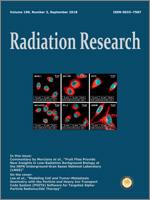The number and energy of secondary electrons generated around the trajectories of swift protons interacting with biological materials are highly relevant in proton therapy, due to the prominent role of low-energy electrons in the production of biodamage. For a given material, electron energy distributions are determined by the proton energy; and it is imperative that the distribution of proton energy at depths around the Bragg peak region be described as accurately as possible. With this objective, we simulated the energy distributions of proton beams of clinically relevant energies (50–300 MeV) at depths around the Bragg peak in liquid water and the water-equivalent polymer poly(methyl methacrylate) (PMMA). By using a simple model, this simulation has been conveniently extended to account for nuclear fragmentation reactions, providing depth-dose curves in excellent agreement with available experimental data. Special care has been taken to describe the electronic excitation spectrum of the target, taking into account its condensed phase nature. A predictive formula has been obtained for the mean value and the width of the proton energy distribution at the Bragg peak depth, quantities which are found to grow linearly with the initial energy of the beam, in good agreement with available data. To accurately characterize (in number and energy) the electrons generated around the proton paths, the energy distributions of the latter at each depth have been convoluted with the energy-dependent ionization inverse mean free paths. This results in a number of low-energy electrons around the Bragg peak larger than when only the proton beam average energy at the given depths is considered. The convoluted ionization inverse mean free path closely resembles the Bragg curve shape. The average energy of the secondary electrons is nearly constant (∼55 eV for liquid water and ∼43 eV for PMMA) in the plateau of the Bragg curve, independent of the proton incident energy and suddenly decaying once the Bragg peak is reached. These findings highlight the importance of a precise calculation of the proton beam energy distribution as a function of the target depth to reliably characterize the secondary electrons generated around the Bragg peak region.
How to translate text using browser tools
11 July 2018
Energy Spectra of Protons and Generated Secondary Electrons around the Bragg Peak in Materials of Interest in Proton Therapy
Pablo de Vera,
Isabel Abril,
Rafael Garcia-Molina
ACCESS THE FULL ARTICLE

Radiation Research
Vol. 190 • No. 3
September 2018
Vol. 190 • No. 3
September 2018




